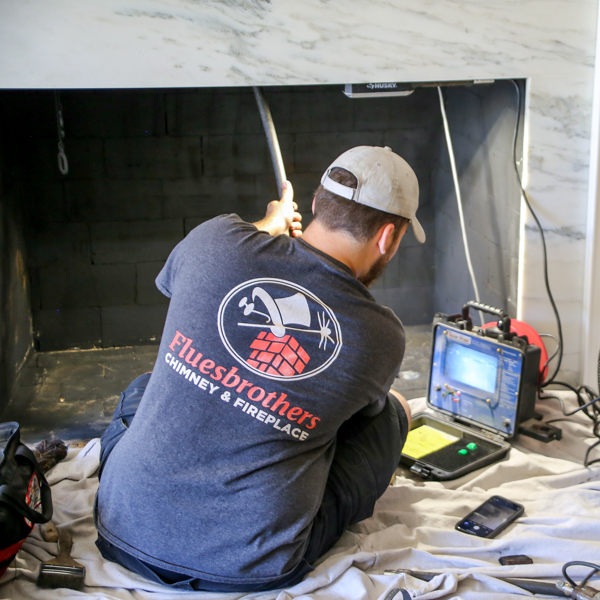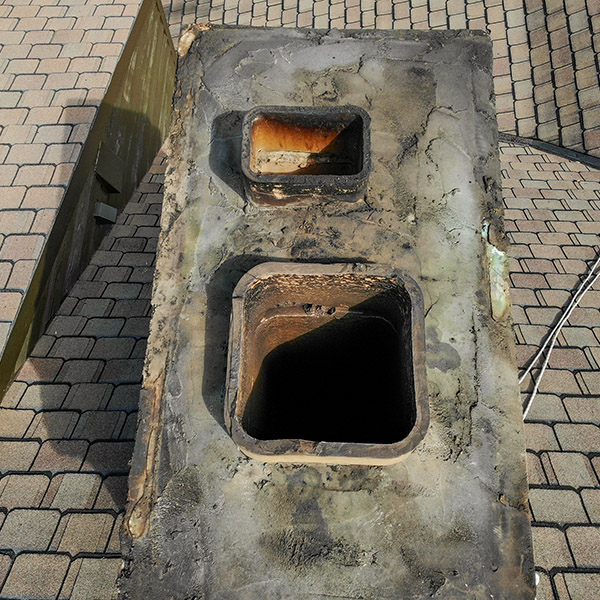Safe Practices for Wintertime Fireplace Use
You’ll enjoy your fireplace a lot more this winter by following a few wise safe practices than you will if you ignore your fireplace and chimney and hope for the best.
Here are the essentials.
 Have your chimney inspected
Have your chimney inspected
A licensed chimney inspector will look over your chimney and fireplace to make sure they’re ready for heavy use. Areas of a basic inspection likely will include:
- Bricks and mortar (chimney masonry)
- Firebox
- Fireplace damper
- Chimney cap
- Chimney crown
- Chimney flashing
- Drafting efficiency
- Flue buildups/obstructions
If anything is found that could lead to unsafe or inefficient operation, your inspector will alert you to it. Most chimney inspectors provide repair and component-replacement services.
Have your chimney cleaned
If it’s been more than a year since the chimney for your wood fireplace has been professionally cleaned, make sure you arrange for this service before firing up the fireplace.
The best practice is to schedule annual chimney cleanings once a year, on or around the same date of the previous inspection.
Chimney cleaning (also called chimney sweeping) involves the use of specialized brushes, scrubbers and whips to dislodge and remove built-up creosote and soot from your chimney flue. Creosote is highly flammable and causes most chimney fires in the U.S. each year.
Your technician also will remove tree debris, the nests of small animals and other flue obstructions that could cause smoke and deadly carbon monoxide to back up into your home.
Operate your fireplace safely and correctly
Just because it’s called a “fire”-place doesn’t mean it’s supposed to be used for any kind of fire. Here are some guidelines:
Burn only firewood
Never burn furniture pieces, packaging materials, pressed board, clothing, magazines, household garbage or any other “foreign” material. These materials can burn way too hot and create way too much smoke.
Burn dry wood
Seasoned firewood has had at least six months to dry out. Damp wood is very smoky, which contributes to more creosote in your chimney.
Start fires with matches and kindling
Do not use accelerants like lighter fluid or charcoal starters to get fires going. These toxic substances can send dangerous fumes into your home, and they can flare up and put your fireplace/chimney system at risk.
Keep smoke and CO alarms in place
Smoke detectors and carbon monoxide monitors are very important if you operate a fireplace. Smoke detectors should be placed throughout the home. A CO monitor should be placed on a wall near the fireplace and higher than the firebox.
Never leave home with a fire burning
This goes without saying, but one more reminder won’t hurt. You cannot control a fire when you’re gone. In addition, if you have small children or playful pets, it’s a good idea to never leave them unattended when your fireplace is running.
 What to do if there’s a chimney fire
What to do if there’s a chimney fire
These are common signs a chimney fire has occurred:
- Rumbling sounds like from a faraway train
- Clicking or tapping noises
- Large amounts of dark smoke coming from either end of your chimney
If you notice any of these signs, call 911 immediately – don’t try to solve the problem on your own. Then put out the fire in the fireplace if it’s safe to do so. When the emergency is resolved, bring out a chimney inspector.
Safe wintertime fireplace use starts with expert help
Fluesbrothers Chimney & Fireplace of Kansas City, KS, is here to help keep your fireplace/chimney system running safely and efficiently all winter long. We provide licensed chimney inspection, chimney cleaning and all types of repair and rebuilding work.
Get your questions answered or schedule an appointment by calling (913) 236-7141.
The post Safe Practices for Wintertime Fireplace Use appeared first on Fluesbrothers Chimney Service.